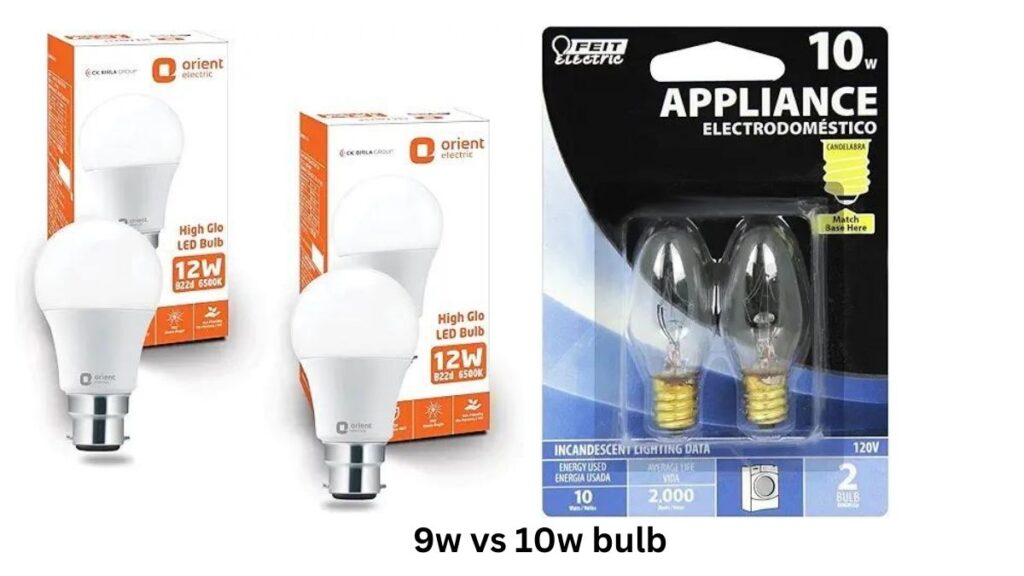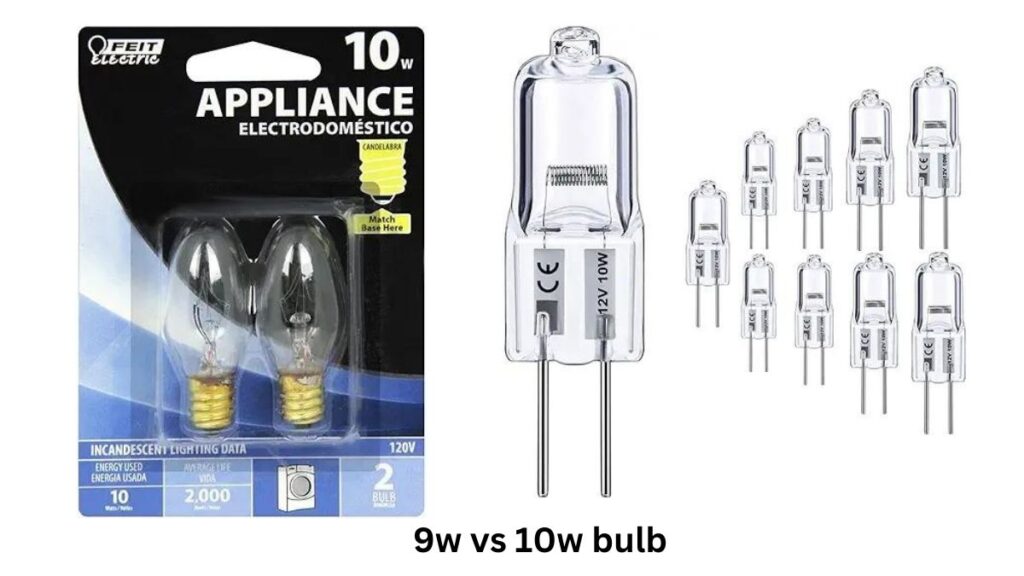Choosing the right light bulb for your home is more than just picking between bright and dim. When comparing a 5W and a 10W light bulb, you’re weighing energy efficiency, brightness, cost, and long-term benefits. In this detailed article, we will explore the differences between the two, helping you make the best decision for your home and save money. Whether you’re creating the perfect ambiance or looking to cut down on electricity bills, we’ve got you covered.
Understanding Wattage: What Do 5W and 10W Mean?
1. Definition of Wattage in Light Bulbs
Wattage measures how much energy a bulb uses. In simple terms, the higher the wattage, the more electricity the bulb consumes. Traditionally, incandescent bulbs used higher wattages to produce light. However, with the advent of LED light bulbs, things have changed. Now, lower wattage bulbs like 5W and 10W can offer the same brightness as older, high-wattage incandescent bulbs.
2. How Wattage Relates to Energy Consumption
Since wattage directly impacts power consumption, it’s an essential factor when considering energy-efficient lighting. A 5W bulb uses less energy than a 10W bulb, but that doesn’t necessarily mean it’s less bright, thanks to advancements in LED technology. Lower wattages lead to energy savings, helping reduce both electricity bills and environmental impact.
3. Brief History of the Transition from Incandescent to LED Bulbs
We’ve come a long way from the old incandescent bulbs that used up to 60 watts or more for everyday lighting. Modern LED retrofitting offers a significant improvement. A 5W LED can now replace a 40W incandescent bulb, while a 10W LED can replace a 60W incandescent. This shift toward eco-friendly lighting solutions is driven by a global desire for cost-effective lighting and reducing energy waste.
Brightness Comparison: 5W vs 10W
i). Lumens Output for 5W and 10W Bulbs
Lumens measure brightness. A 5W LED typically produces around 400-500 lumens, which is roughly equivalent to a 40W incandescent bulb. A 10W LED, on the other hand, can produce 800-1000 lumens, similar to a 60W incandescent. In short, wattage doesn’t determine brightness—lumens do.
ii). Equivalent Incandescent Wattages
To make it simpler, think of a 5W LED as replacing a 40W incandescent, and a 10W LED as replacing a 60W incandescent. This is why lumens vs watts has become a more crucial comparison for modern lighting.
iii). Factors Affecting Perceived Brightness
Factors like light distribution, room size, and lighting design influence how bright a room feels. A small room with white walls might feel brighter with a 5W bulb, whereas a larger room could require the 10W option to achieve the same effect.
Energy Efficiency: Which Bulb Saves More?
1. Annual Energy Consumption Comparison
When it comes to energy-efficient lighting, the 5W bulb consumes about half the electricity of a 10W bulb. If you’re lighting multiple rooms or fixtures, the energy savings from using 5W bulbs can add up significantly over time.
2. Cost Savings Over Time
On average, a 5W LED bulb consumes about 5 kilowatt-hours (kWh) per year, while a 10W bulb consumes 10 kWh. This results in a noticeable difference in your electricity bill. Switching to 5W bulbs in areas where you don’t need maximum brightness can save you a substantial amount of money over the years.
3. Environmental Impact of 5W vs 10W Bulbs
Less energy consumption means a smaller carbon footprint. By using lower wattage bulbs, you’re contributing to a sustainable lighting solution that helps reduce carbon emissions. Both 5W and 10W bulbs are excellent choices for mercury-free lighting, minimizing the risk of harmful chemicals entering the environment.
Applications: Where to Use 5W and 10W Bulbs
a). Ideal Rooms and Fixtures for 5W Bulbs
A 5W bulb is perfect for ambient lighting or smaller spaces like bathrooms, closets, or bedside lamps. These bulbs are also great for decorative fixtures where softer light is preferred.
b). Best Uses for 10W Bulbs
The 10W bulb is ideal for task lighting—areas where you need brighter, more direct light, such as kitchens, home offices, or reading lamps. Its higher brightness makes it perfect for larger rooms or spaces that require clear visibility.
c). Mixing and Matching for Optimal Lighting Design
Consider using a combination of both 5W and 10W bulbs to create layers of lighting in your home. This strategy, known as lighting ergonomics, ensures a well-balanced atmosphere that suits both functional and aesthetic needs.
Cost Considerations: Initial Investment vs Long-term Savings
i). Average Prices of 5W and 10W Bulbs
Both 5W and 10W bulbs are relatively affordable, though 10W options may be slightly more expensive due to their higher brightness. However, both options are great investments, especially when compared to older incandescent or fluorescent bulbs.
ii). Lifespan Comparison
One of the greatest benefits of LED technology is the extended lifespan. Both 5W and 10W bulbs can last upwards of 15,000 to 25,000 hours, far exceeding the lifespan of incandescent bulbs. This leads to lower maintenance costs and fewer bulb replacements over time.
iii). ROI Analysis for Both Options
Over the course of several years, the return on investment (ROI) for both 5W and 10W LEDs is significant. While the initial cost might be slightly higher than traditional bulbs, the energy savings and longer lifespan quickly offset the difference.
Light Quality and Color Temperature
1. Color Rendering Index (CRI) for 5W and 10W Bulbs
The color accuracy of a light source is measured by the CRI. Both 5W and 10W bulbs typically have a CRI above 80, which means they provide good color representation. This is crucial for rooms where accurate color perception matters, such as kitchens or art studios.
2. Available Color Temperatures
There are two types of color temperature: warm (yellowish) and cool (bluish). Both 5W and 10W bulbs come in various color temperatures, including warm white (2700K), neutral white (4000K), and cool white (5000K). Choosing the right temperature can affect the room’s mood and functionality.
3. Impact on Mood and Productivity
Warmer lights (2700K to 3000K) are relaxing and ideal for living rooms or bedrooms, while cooler lights (4000K to 5000K) promote focus and are better suited for workspaces. Your choice between 5W and 10W may also depend on the specific mood you want to set in a given space.
Smart Home Integration: Are 5W and 10W Bulbs Compatible?
i). Smart Features Available for Both Wattages
Both 5W and 10W bulbs can be integrated into smart home systems, allowing you to control them through apps or voice commands. Some models even come with dimming capabilities, giving you more control over the room’s ambiance.
ii). Compatibility with Popular Smart Home Systems
Whether you’re using Amazon Alex, Google Home, or Apple HomeKit, both 5W and 10W smart bulbs are compatible. They also offer features like scheduling, energy monitoring, and remote control, making them a great addition to any smart lighting design.
iii). Energy Monitoring Capabilities
Smart bulbs often come with the ability to track energy usage. This can help you see real-time consumption, especially useful if you’re trying to determine whether to opt for 5W or 10W bulbs in different parts of your home.
Conclusion
Illuminating your home doesn’t have to be a dim experience! Whether you choose the energy-sipping 5W bulb or the slightly brighter 10W option, you’re already making a smart choice by considering LED technology. The best light bulb for you depends on your specific needs, room size, and desired ambiance. Don’t be afraid to experiment with both wattages to create the perfect lighting symphony in your home.
Ready to make the switch? Head to your local home improvement store or check out affordable LED light bulbs online and light up your life with the perfect bulb!
Related articles:


